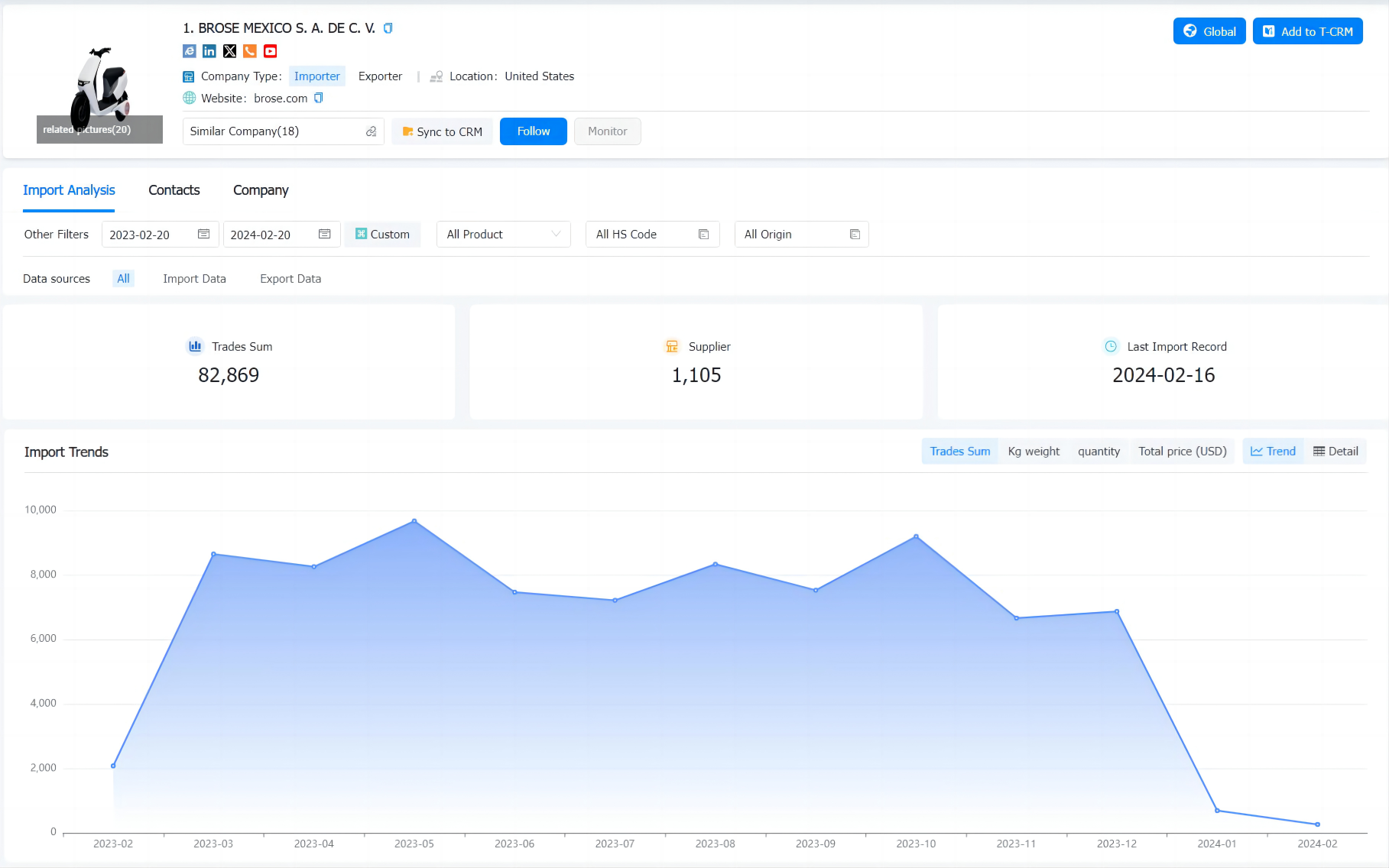 Export News
Export News
 20-02-2024
20-02-2024
Diamonds are beautiful and precious gemstones, shining crystals with the hardest and highest thermal conductivity among all natural materials. Most natural diamonds have a history of at least 1 billion years. Besides serving as symbols of status and personal ornaments, diamonds are also used for cutting and polishing tools.
For both unset and set diamonds, the 4-digit Harmonized System (HS) code prefix is 7102.
With diamond import data, researchers can discover the most promising opportunities for selling diamonds in the international market.

How to expand into the global market using diamond import data?
Step 1: Understand the global diamond market overview based on diamond import data
The total global diamond procurement amount reached $126.1 billion in
2022.
Overall, since the total diamond purchase of $130.8 billion in 2018, the average value of diamonds purchased by all importing countries has decreased by -3.6%. Compared to the $120 billion spent in 2021, the dollar amount spent on imported diamonds increased by 5.1% year-on-year.
In general, the top 5 buyers of imported diamonds are India, the United States, Hong Kong, the United Arab Emirates, followed by Belgium. Together, these major diamond importers accounted for nearly three-quarters (73.6%) of the international diamond sales in 2022.
From a continental perspective, Asian countries spent the most on imported diamonds in 2022, with a purchase amount of $77.7 billion, accounting for 61.8% of the global diamond import volume. North American importers ranked second, accounting for 19.3%, while an additional 15.7% of the global diamond import volume flowed to European countries.
Smaller proportions went to Africa (2.7%), Oceania, led by Australia and New Zealand (0.4%), and Latin America (excluding Mexico but including the Caribbean region) (0.2%).
Step 2: Understand the fluctuation of global diamond market demand based on diamond import data
Using the diamond import data provided by Tendata,
new market opportunities and trends can be identified. For example, which
countries and regions are experiencing an increasing demand for diamond imports,
and which ones have a steadily rising diamond import volume.
With this diamond import data, it is possible to identify which diamond products have a market, and to which countries exporting diamond products is more viable. This information helps open up new markets and expand business scope. Foreign trade enterprises can also more selectively target potential customers, identifying the countries and regions where they are located, such as countries and regions with high import volumes or emerging import markets.
Here are the top 15 countries with the highest diamond import values in 2022:
1. India: $27.3 billion (21.6% of total diamond imports)
2. United States: $23.7 billion (18.8%)
3. Hong Kong: $15.7 billion (12.5%)
4. United Arab Emirates: $13.3 billion (10.5%)
5. Belgium: $12.8 billion (10.2%)
6. China: $8.5 billion (6.7%)
7. Israel: $5.9 billion (4.7%)
8. Switzerland: $2.4 billion (1.9%)
9. Thailand: $2.3 billion (1.9%)
10. Botswana: $2.2 billion (1.7%)
11. United Kingdom: $1.6 billion (1.3%)
12. Singapore: $1.5 billion (1.2%)
13. France: $1.1 billion (0.9%)
14. Italy: $0.9675 billion (0.8%)
15. South Africa: $0.8393 billion (0.7%)
Among these countries, the fastest-growing diamond markets since 2021 are France (65.2% growth), Singapore (42.9% growth), Thailand (34.2% growth), and Switzerland (33.7% growth).
The four major countries with declining diamond purchases are Botswana (a decrease of -25.1% compared to 2021), mainland China (a decrease of -14.3%), the United Arab Emirates (a decrease of -9.8%), and Israel (a decrease of -4.3%).
In terms of value, the listed 15 countries accounted for 95.3% of the total diamond imports in 2022.
Step 3: Target customer screening
By using Tendata, diamond import data can be
obtained, including which types of diamonds have a large import volume and which
specifications of diamonds are more popular. This information provides a basis
for understanding customer needs and preferences, supporting the development of
subsequent product and marketing strategies.

Step 4: Develop marketing strategies
Utilizing the diamond import data provided by Tendata, more precise marketing strategies can be formulated based on an
understanding of customer needs and preferences. For example, different styles
and specifications of diamonds can be introduced for different countries and
regions, or personalized services and solutions can be provided based on
customer purchasing habits and preferences.
Step 5: Strengthen customer relationship management
By using the diamond import data provided by Tendata, information on customer purchasing history and cooperation can be
obtained, including details such as purchase volume, purchase cycle, and
supplier replacement. This diamond import data helps gain a more comprehensive
understanding of customer needs and cooperation conditions, providing better
overall support and assurance for future cooperation.

Uncovering Foreign Trade Opportunities – Mainly Through Foreign Trade Data
Currently, the government has officially rolled out policies to support the development of the big data industry. In this era, customs data has become an indispensable part of the international trade ecosystem. The new approach to facilitating transactions in the Information Age involves constantly uncovering new business opportunities from customs data using big data analysis methods.
Shanghai Tendata's Foreign Trade Portal covers detailed customs data from 91 countries, (>>> Click to use data online for free) statistical data from 27 EU countries, millions of accurate and genuine buyer information, and detailed information on completed customer transactions. The system offers a one-click generation of 17 types of market data analysis reports, assisting management in making informed decisions effortlessly.
Tendata's foreign trade big data can help foreign trade companies in identifying, marketing to, and managing customers, as well as fulfilling orders with a complete set of products and solutions. In the future, Tendata will continue to explore products to cater to more scenarios within the export industry.
In summary, Tendata is a big data company and a pioneer in the Chinese trade industry, helping foreign trade businesses in customer development, market analysis, trade facilitation, and data output.

Category
Leave Message for Demo Request or Questions


 T-info
T-info T-discovery
T-discovery

 My
Tendata
My
Tendata Market Analysis
Market Analysis Customer
Development
Customer
Development Competitor
Monitoring
Competitor
Monitoring Customer Relationship
Customer Relationship





































































































































